Looking for a GPU? Don't buy yet - graphics card prices are falling rapidly
Holding off for a new graphics card is a wise policy

While graphics card prices remain infuriatingly high for most consumers, the latest data suggests that we're well on the road towards a more consumer-friendly market.
In the US, eBay list prices for in-demand Nvidia RTX graphics cards have been consistently falling for four months now - the most solid and consistent decline we've seen since the GPU market exploded early last year.
While these trends, so far, haven't exactly been reflected at the usual big online retailers like Amazon, Best Buy, or Newegg, there is at least concrete evidence to suggest we're headed in the right direction - for now, at least.
How do we see things going? It's early days, but all the evidence right now suggests that graphics card prices could be set to take a tumble. If you've been on the cusp of buying that shiny new GPU, we'd strongly advocate holding on just a little bit longer to see how things play out. We're going into more depth about how rumored developments could affect the market just below but first, let's take a look at the latest data.
GPU prices on a consistent downward trend

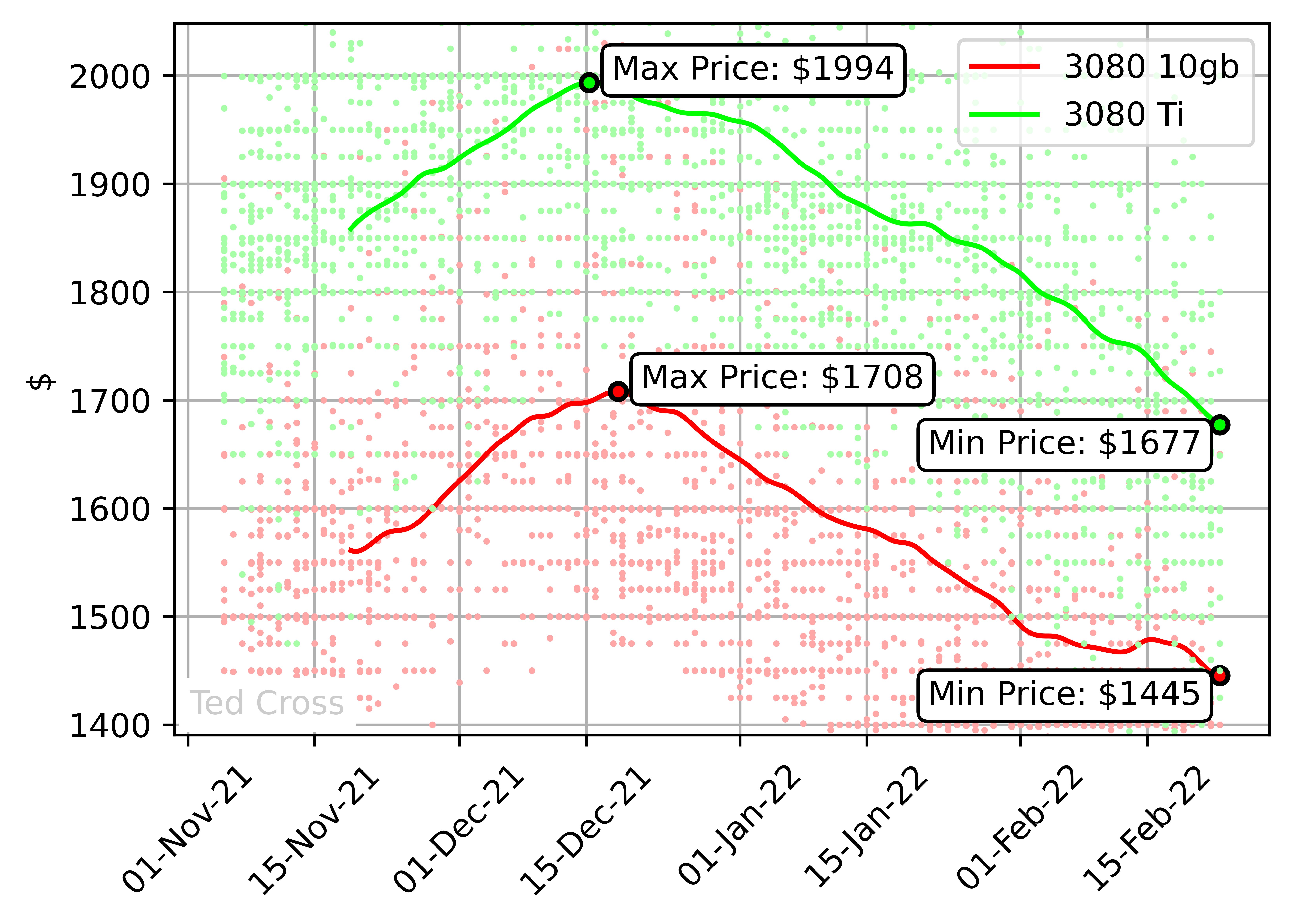
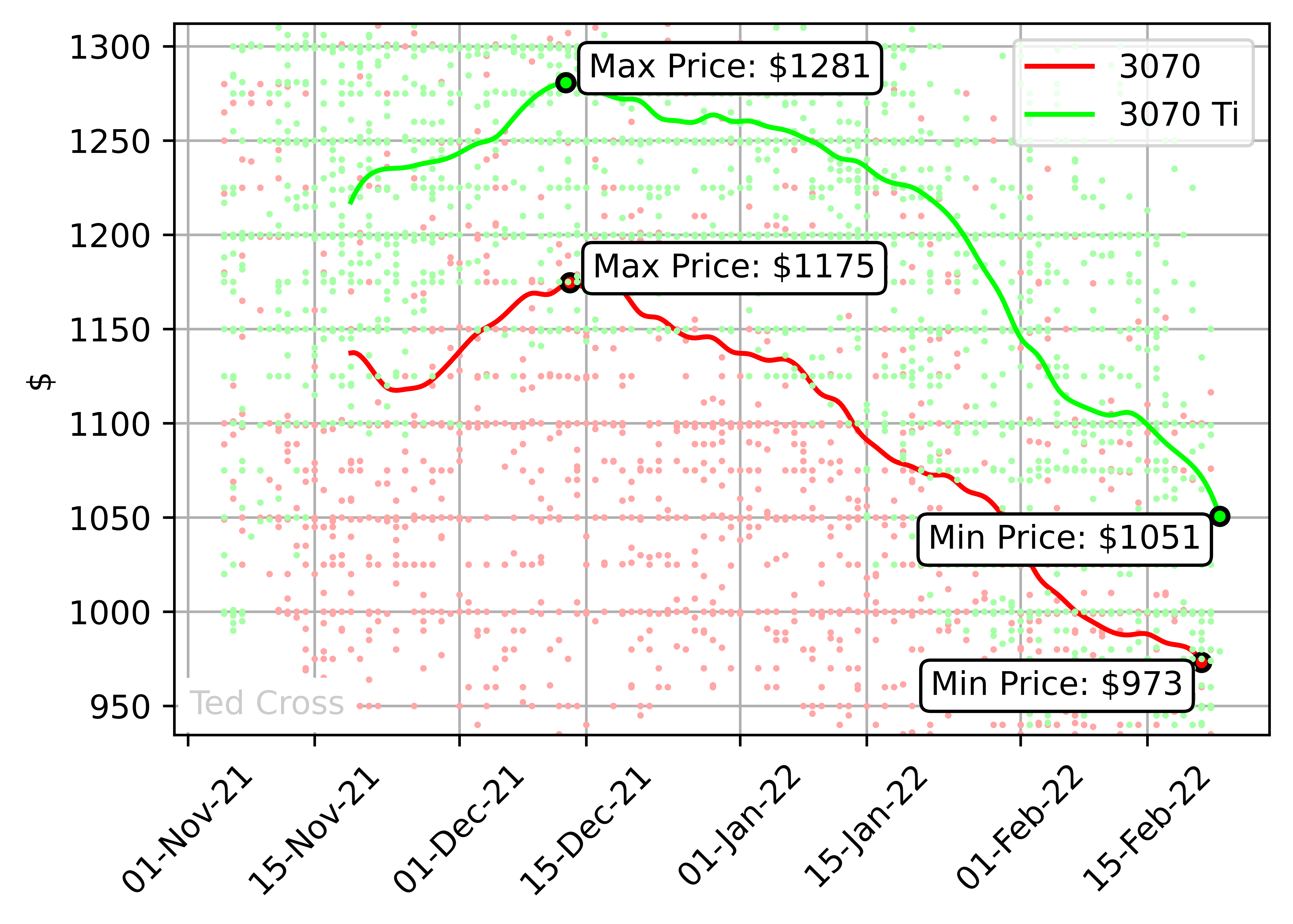
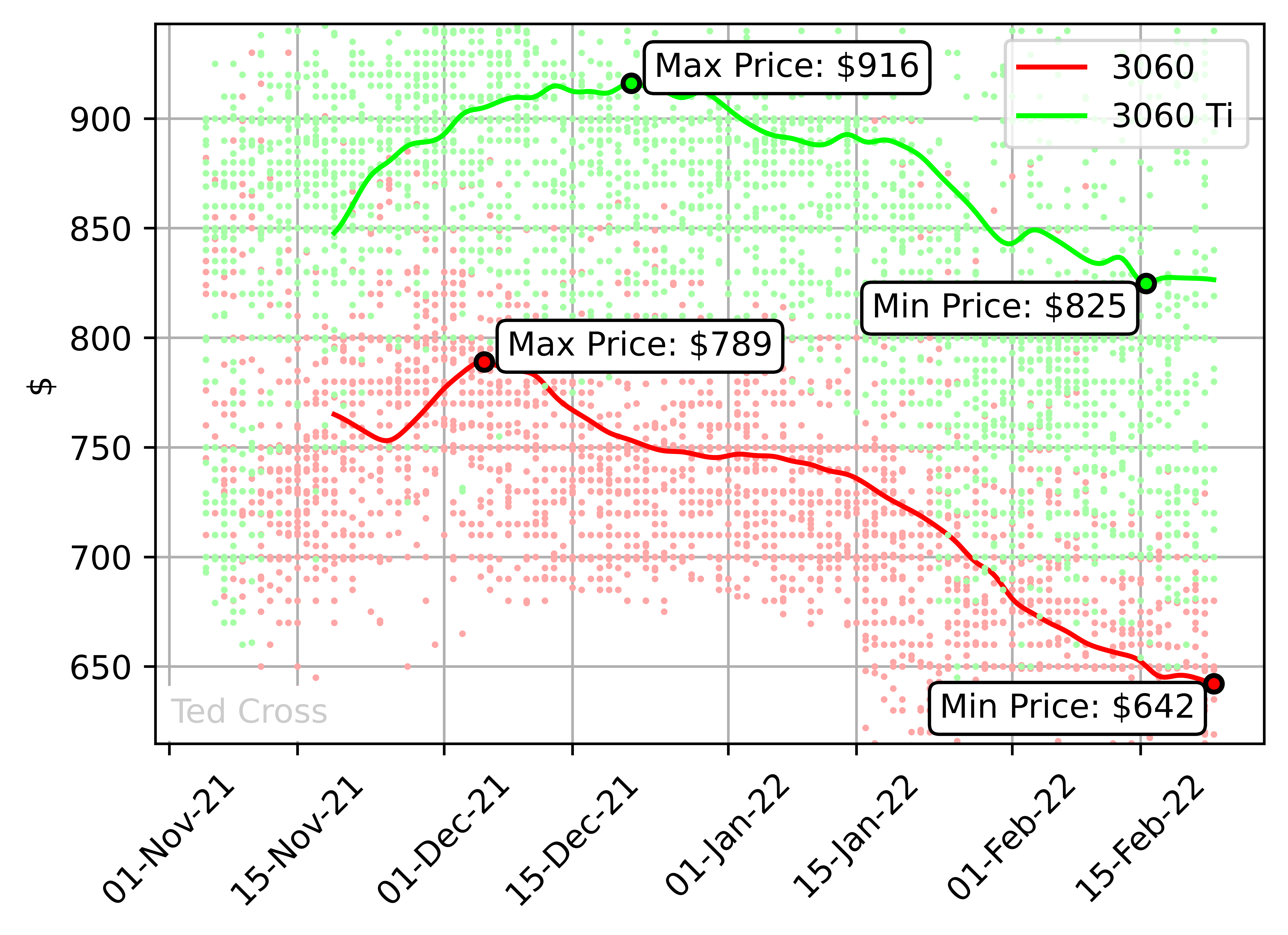
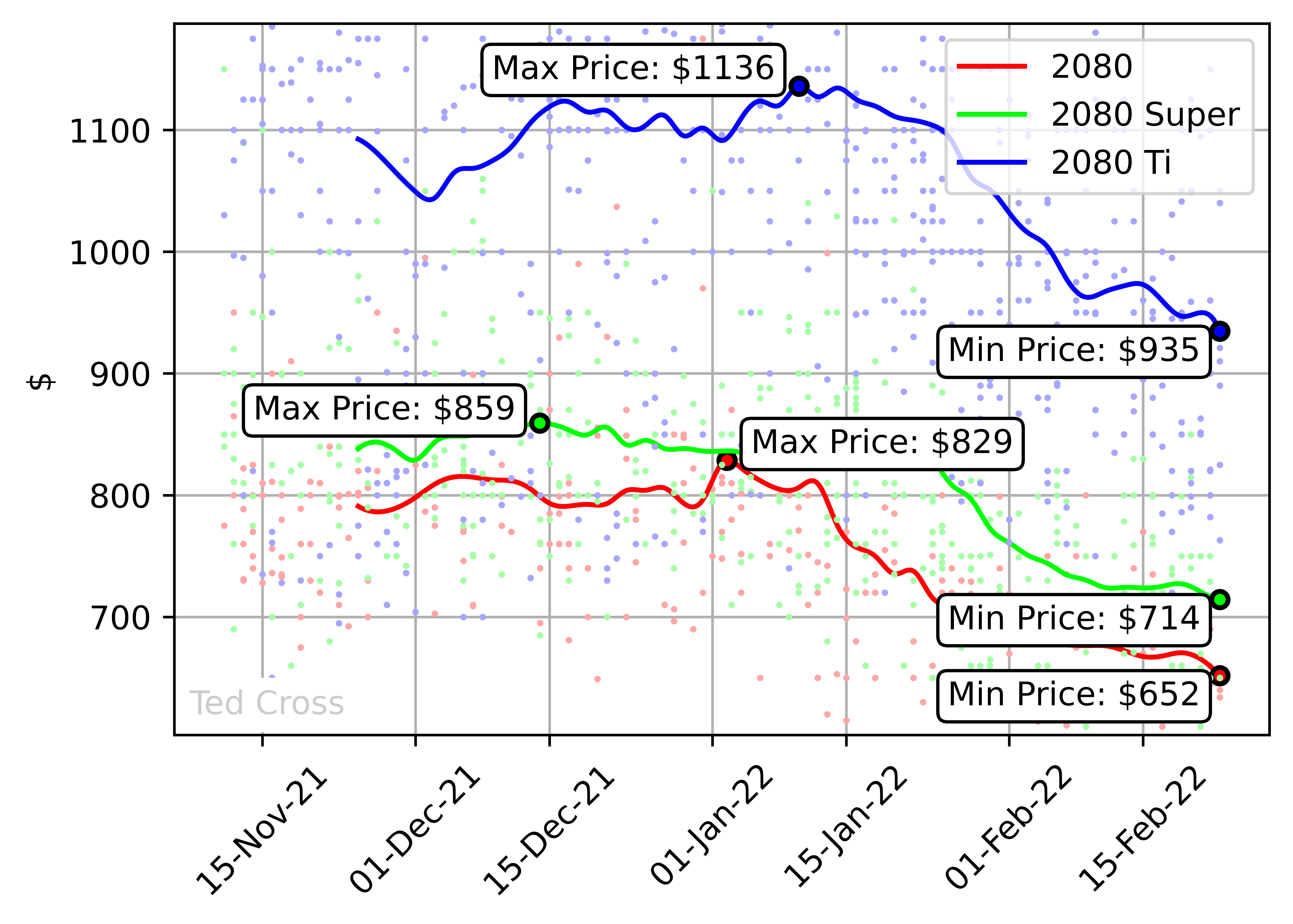
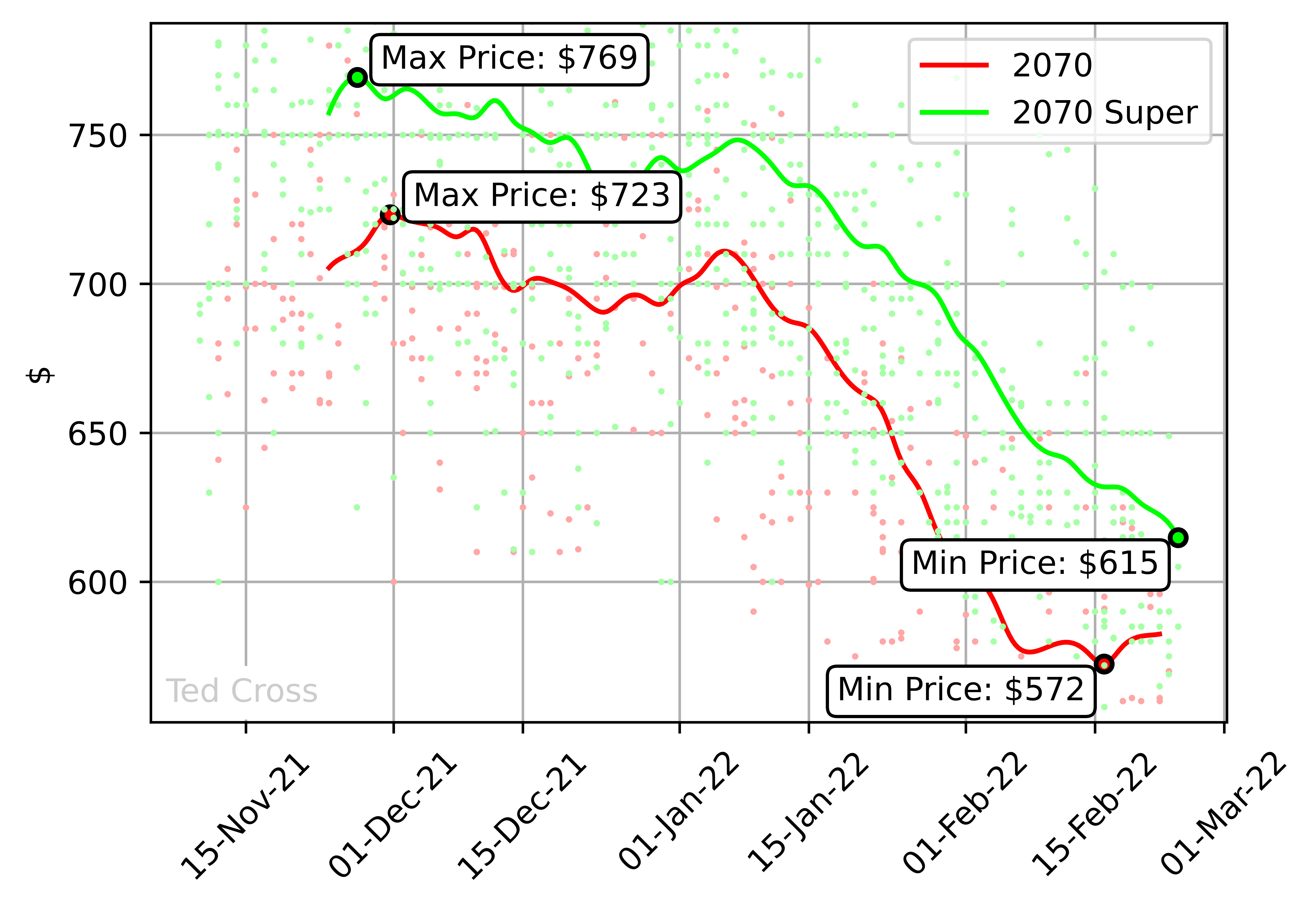
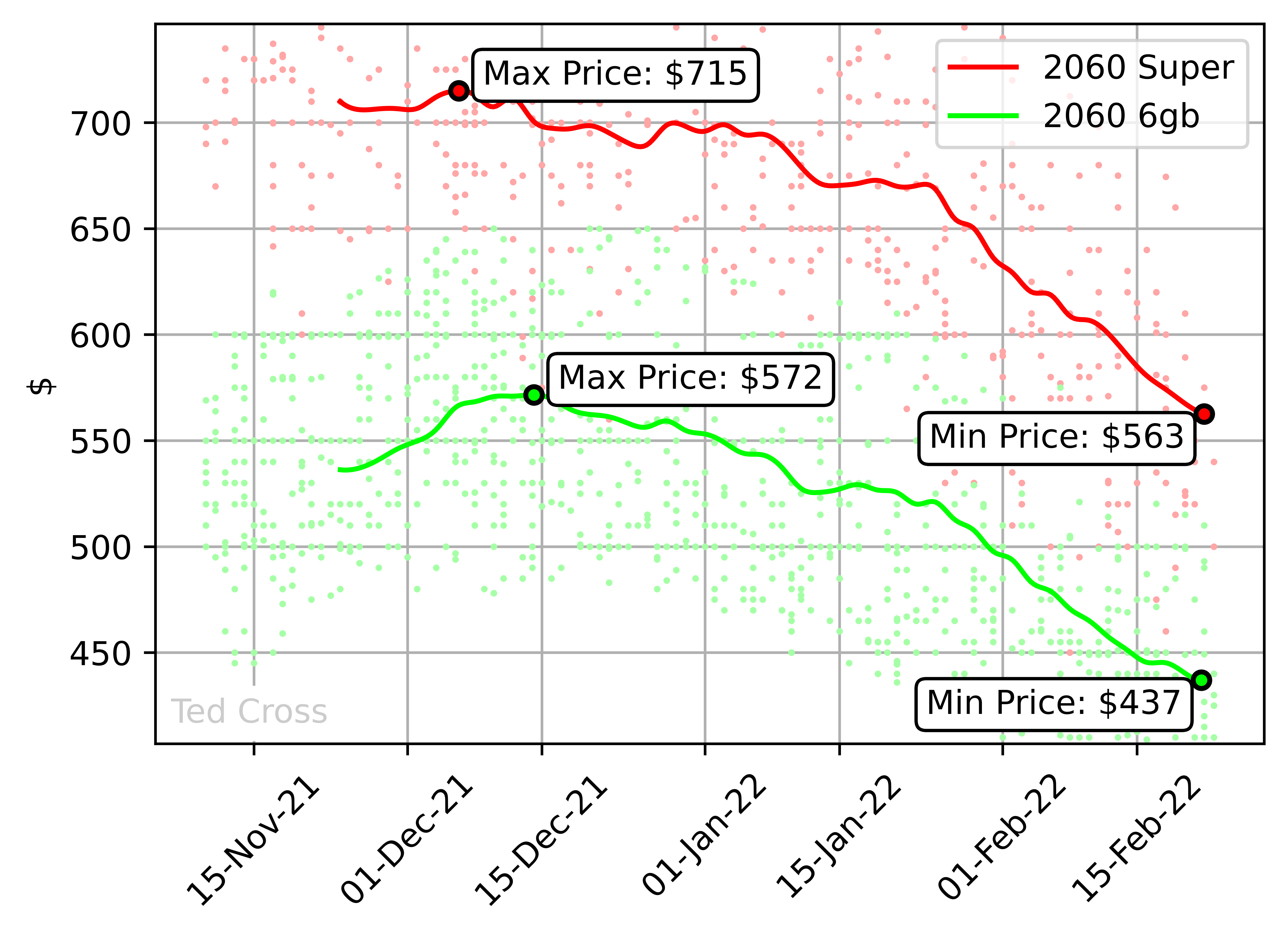
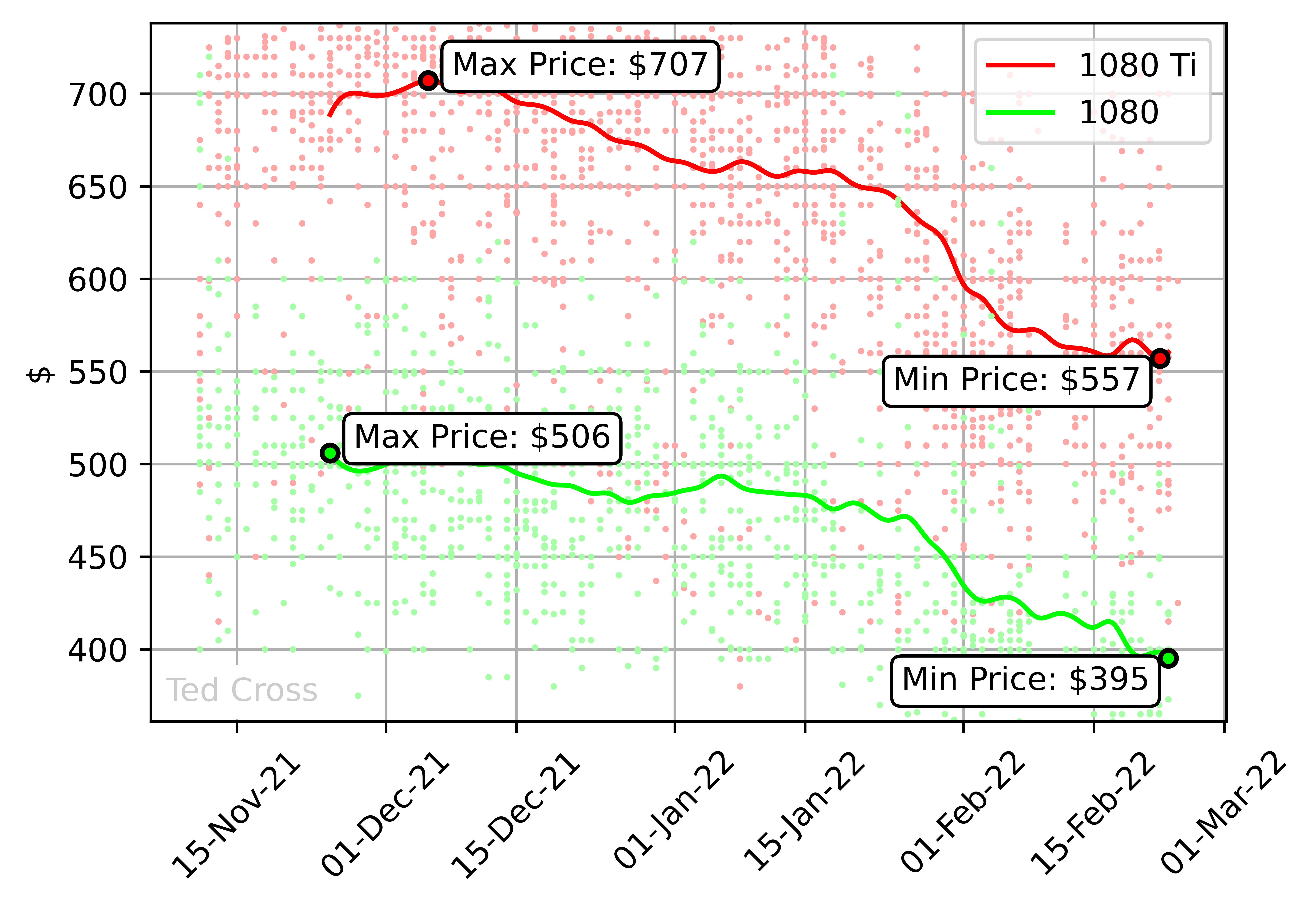
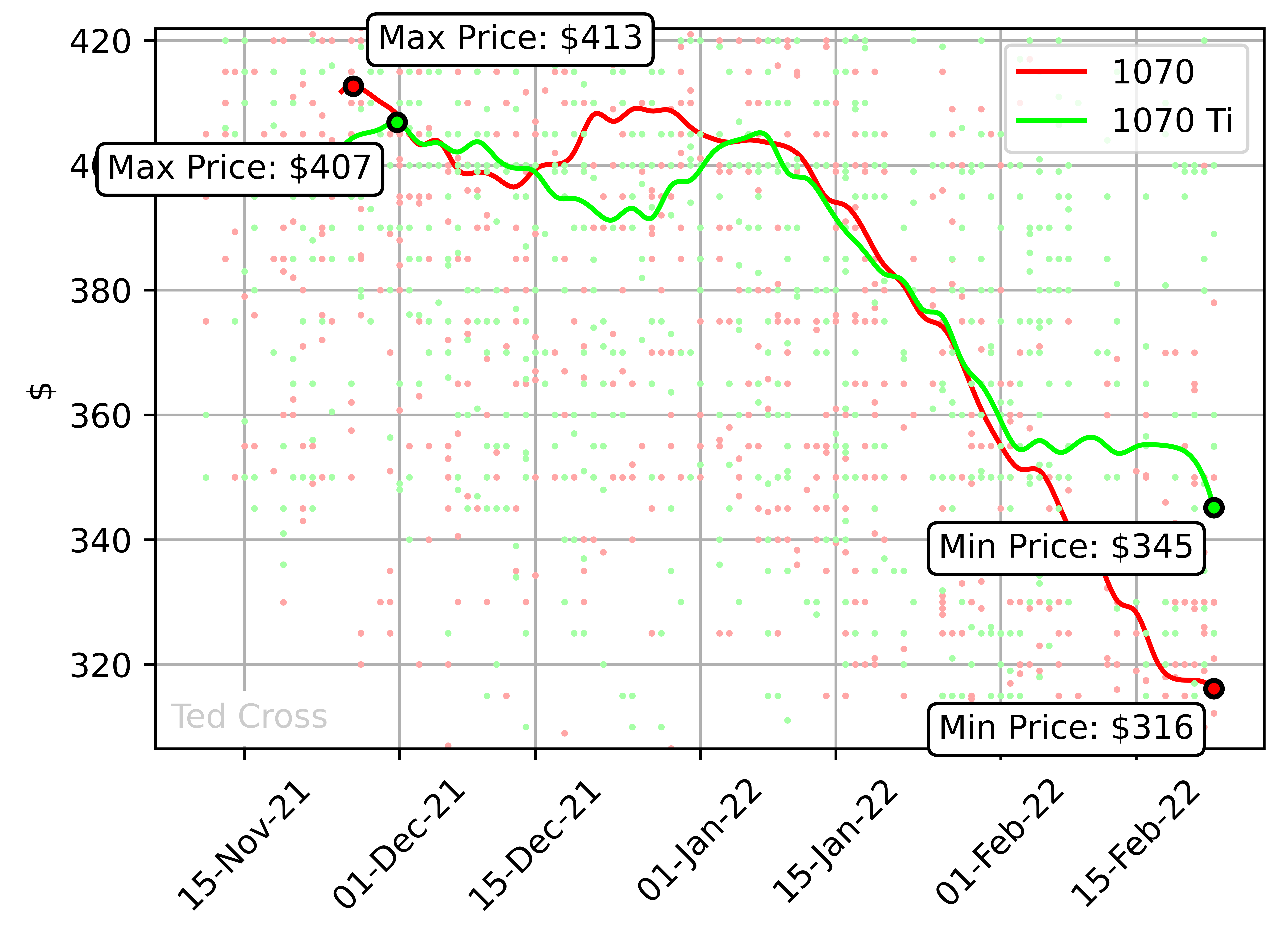
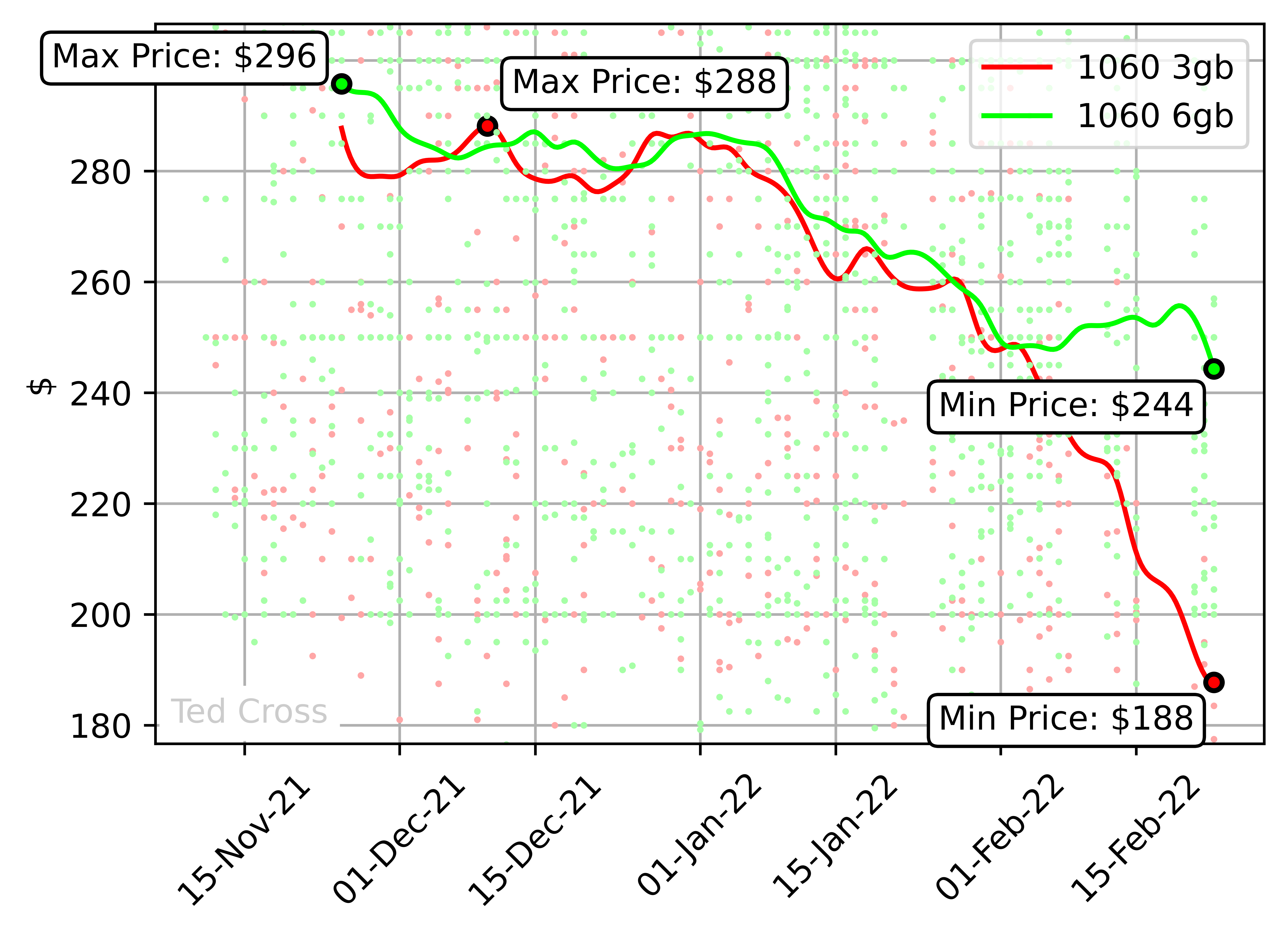

Every card tracked shows a downward trend from November 2021 to late February 2022
Just above, you can see a few graphs that were sent in by a TechRadar reader (thanks, Ted!) that showcase how consistently daily average graphics card prices have been falling on eBay over the past few months.
Ranging from the high-end Nvidia RTX 3090 to the humble GTX 1050, we can see that every card tracked shows a downward trend from November 2021 to late February 2022. Considering that not a single GPU is excluded from this overall trend, this is pretty conclusive in indicating that demand is falling across the board.
Here's that data again laid out in a table, showing every single Nvidia card tracked and the relative price drop.
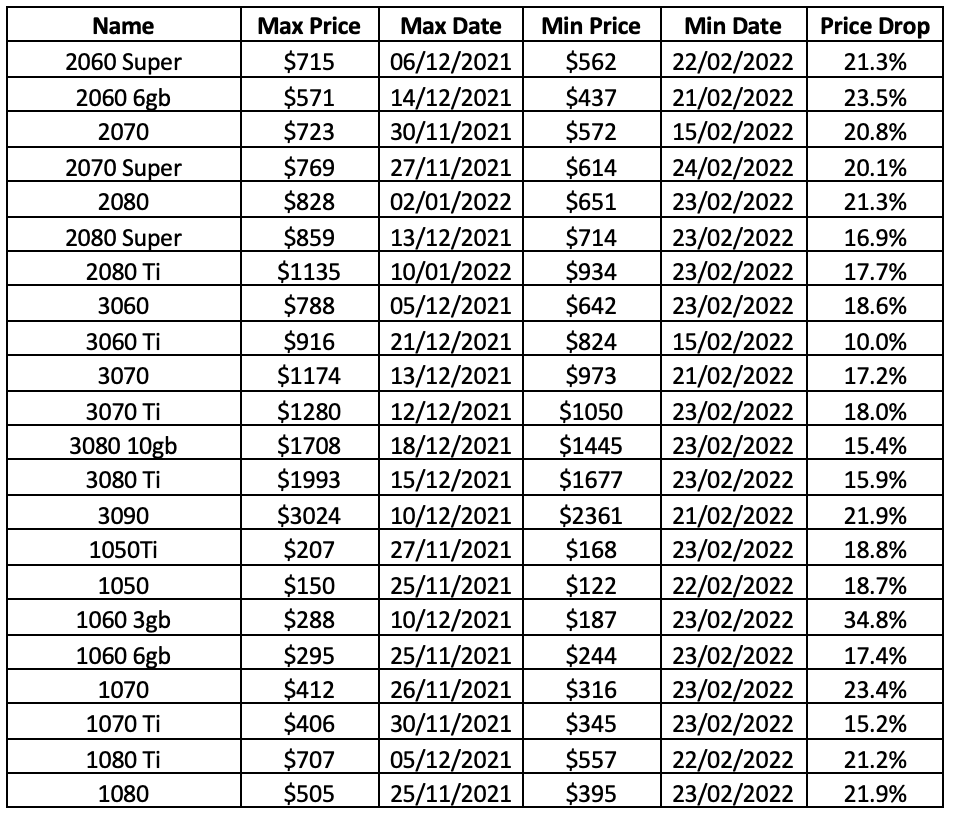
Data like this reinforces the notion that graphics card prices over the past year have been inextricably linked to the crypto market and mining profitability.
The biggest declines have consistently taken place on the older Nvidia GPUs, with the GTX 1060 3GB variant being the card with the overall biggest drop. Falling from an average daily price of $288 to $188, it's seen a total drop of almost 35% since November. Should you buy this admittedly ancient card in 2022? Probably not. Is it still great to see a price drop? Absolutely.
On the newer RTX 3000 series cards, the biggest price drop was on the high-end RTX 3090, which dropped 21% from an average daily price of an eye-watering $3,024 to $2,361 - an absolute bargain (joking). Drops on the other cards in the range have been less dramatic, but each one has fallen on average anywhere between 15% and 18% since November.
Interestingly, the card that fell the least was the RTX 3060 Ti at 10%, which can probably be attributed to this card's excellent mining capabilities. In our eyes, data like this reinforces the notion that graphics card prices over the past year have been inextricably linked to the crypto market and mining profitability.
And, for those more interested in team-red, here's a quick roundup of that same data for AMD cards.

Aside from a huge drop on the standard RX 6800, we're seeing prices here that are generally in line with those on the Nvidia cards. As an overall subset within our data (which stretches back 90-days), less AMD cards were sold via eBay - 2,188 for AMD, versus 38,945 for Nvidia. There is, however, enough data here for statistical significance overall. In short, if you're looking for an AMD card then the story is essentially the same - prices are falling right now.
How long until things return to normal?
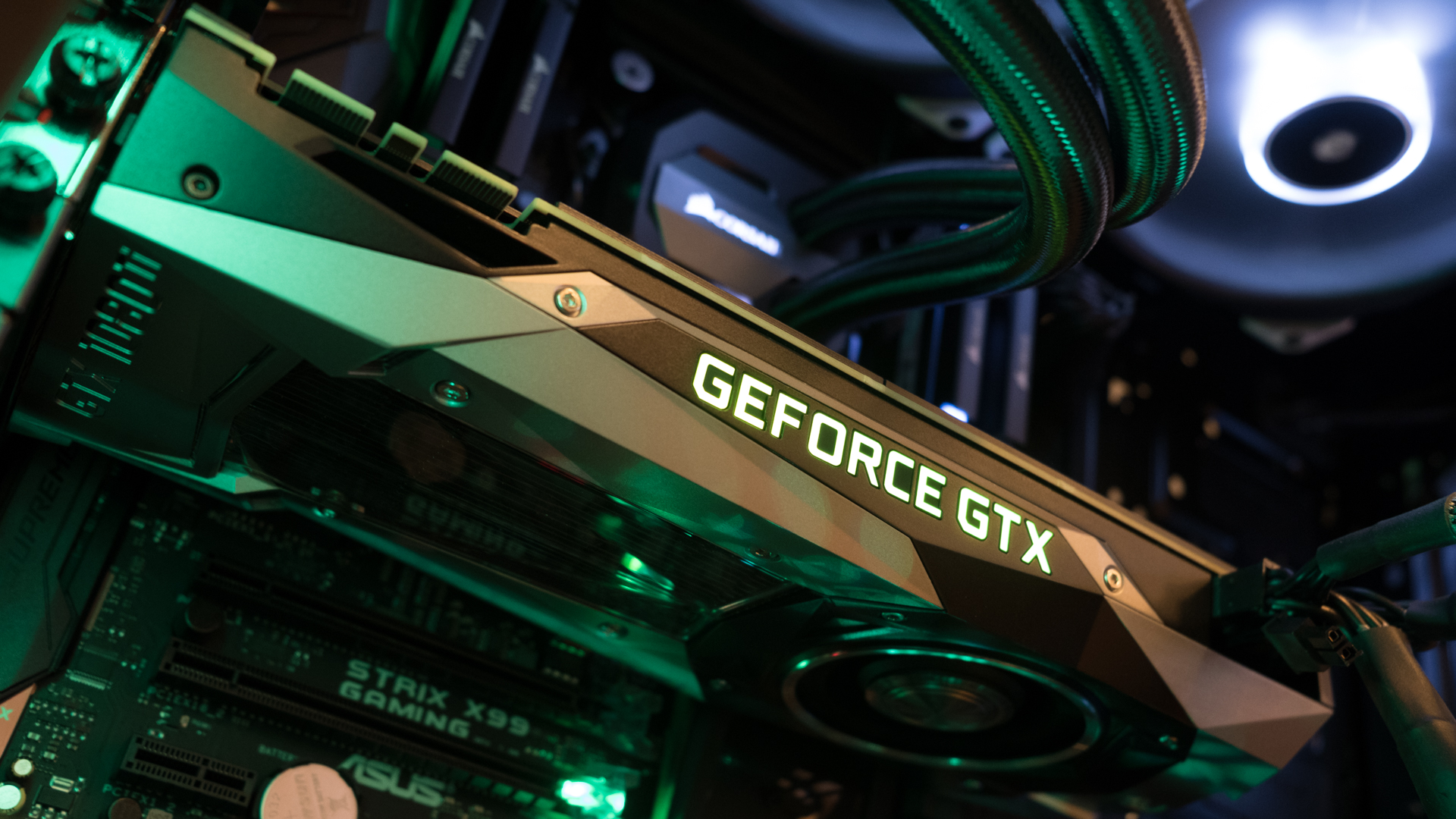
Ok, so we admit - falling graphics card prices and clear trends don't change the fact that the market is still absolutely fubar right now. It's great that eBay listings are falling but let's face it, we're all hoping for a new GPU at MSRP prices from Amazon, Best Buy, or the like. The real question here is, how long until these trends turn into concrete purchasing options for the vast majority of gamers.
So far, it appears that the best estimations from AMD and Nvidia themselves are for late 2022 - which could just hold true if we stay on this current course. The biggest upcoming developments that could affect this is, one - the shift of the popular cryptocurrency Ethereum from a mining-based system to proof of stake, and two - Intel's much-anticipated entrance into the GPU market. Of the two, it's likely that mining becoming unprofitable on the most popular coins will make the biggest difference for gamers - judging by how linked GPU prices are to crypto demand.
We wouldn't, however, expect graphics card prices to return right back down to the good old days of MSRP for a long time though. A month ago I argued that it's sensible to expect something akin to a 30% mark-up by the end of the year, and I think that still holds up as of late February.
When should you buy a graphics card?
You could opt to get one now, but I think it's safer to wait - at least for a month or so to see how things play out. If the crypto market does explode again, then there should be a little lead time until it's reflected on inflated prices, or at least one would hope. If things stay relatively stable and continue on this trend, we should have plenty of wiggle room for graphics card prices to fall even further.
This, of course, doesn't help much if your card craps out and you need an immediate replacement, but for those who have been holding out for a while, it's definitely worth it. After all, if you've already been waiting for a year, what's another month or two?
Sign up for breaking news, reviews, opinion, top tech deals, and more.

Alex is TechRadar's retail editor, specializing in deals, buying advice, and general tips on how to save our readers as much cash as possible. He's covered events like Black Friday and Amazon in some capacity for over seven years now; both in editorial and other ecommerce adjacent roles on TechRadar, T3, GamesRadar, and other Future PLC sites. Alex's expertise touches on most areas, but he has a particular love for phones, laptops, and cameras, being an avid photographer.